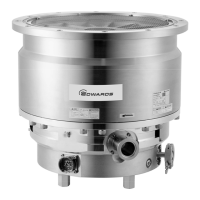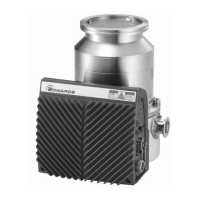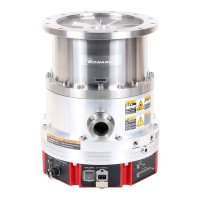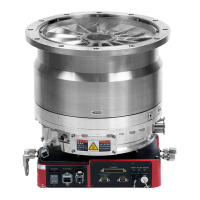STP Series Turbomolecular Pump
4. When the rotational speed decreases to 500 rpm or less, the "BRAKE" LED extinguishes. The
LCD displays "Levitation" (LEVITATION state).
5. When performing the start operation, the STP pump can be accelerated even while it is stopping.
4.2.2 Starting the STP pump after a safety function operates
A safety function operates when an abnormality/error occurs in the STP pump or peripheral
equipment. To restart the STP pump, remove the cause of the abnormality/error after the "BRAKE"
LED extinguishes, and perform the RRESET operation. The "FAILURE" LED extinguishes and the
safety function is released (RESET operation). Then, performs the start operation.
For the safety functions and troubleshooting, refer to "Maintenance" in the STP Control Unit
Instruction Manual (C).
4.3 Gas pumping, cooling and baking the STP pump
4.3.1 Gas pumping
WARNING
To prevent an accident, confirm the characteristics of gases to be used, referring to
the Material Safety Data Sheet (MSDS) you obtain from the gas supplier, and, keep
MSDS and a safety advice of gas supplier.
WARNING
When using pyrophoric gas, keep MSDS and a safety advice of gas supplier.
WARNING
When pumping gases, they may remain in the STP pump. Introduce a purge gas
and then exhaust all gases. Residual gases can cause an accident if/when the
pump is removed. Take measures according to MSDS to prevent an accident when
using toxic, reactive or combustible gases.
CAUTION
Chlorine or fluorine system gases can be used in corrosion resistant pumps. When you use the
following gases, contact Edwards:
• Gases including alkaline metals except Li gas.
• Gases including Ga, Hg, In, or Sn.
• HBr gas.
Non-corrosion resistant pump cannot use the above gases including chlorine and fluorine system
gases. When pumping gases, cool the pump to prevent overheating.

